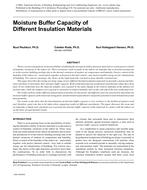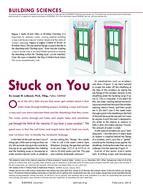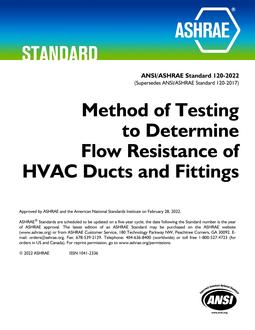Recent progress in computer simulation studies of heat pump performance is presented. This includes an analysis of cycling losses, performance under extreme operating conditions, and defrost controls. The objective was to achieve a better understanding of heat pump operation, recognize failure modes, and evaluate control alternatives. Main results of the study were:
- Cyclic degradation in terms of constant equivalent delay time, ZD, and off period power input agrees with many experimentally observed features and gives a good representation throughout the heating load range. It matched to agree at 20% load and 6 min. of on-period, the cycling losses with the CD-method are higher than the ZD-method by a systematic 2-3% at 50% load and -5 to -4% at 10% load. The larger differences apply to cases with larger cycling losses such as heat pumps with larger coils or operating at higher cycling rates.
- Loss of refrigerant charge degrades system performance. Capillary tube systems generally have charge insensitive operating regimes, whereas systems with thermal expansion valves do not. Condensing temperature drops faster with TEV systems than with cap tube systems as charge loss increases.
- Reduction of air flow over the heat exchangers and consequent drop in coil capacity increases condensing temperature or decreases the evaporating temperature leading to decreases in both mass flow and system COP.
- Mass flow decreases induced by either the compressor or the expansion device were analyzed. The former lead to decreases in the air-refrigerant coil temperature differences while the latter caused them to increase.
- Changing air-to-air heat exchangers from forced to gravity while maintaining the heat exchanger efficiency shows performance improvement of about 18% on a seasonal basis. The actual amount would also depend on how the system is sized; i.e., undersized systems save less.
- The influence of frost build-up time before initiating the defrost cycle on heat pump performance was evaluated. The seasonal COP depends little on the way defrost is initiated. The evaluated optimum length of frost build-up time leads to a higher COP than other defrost strategies and the number of defrost cycles is 25-50% lower than fixed timer systems, but higher than the DP-demand defrost systems. The number of defrost cycles can be 2-4 times higher for fixed timer control systems than for DP-demand defrost systems.
The functions of a microprocessor based heat pump logic control are discussed together with its performance in a number of lab and field tests.
Citation: Symposium, ASHRAE Transactions, Volume 86, Part 1, Los Angeles, California
Product Details
- Published:
- 1980
- Number of Pages:
- 18
- File Size:
- 1 file , 1.8 MB
- Product Code(s):
- D-LA-80-05-4


